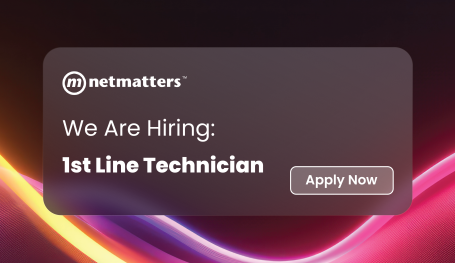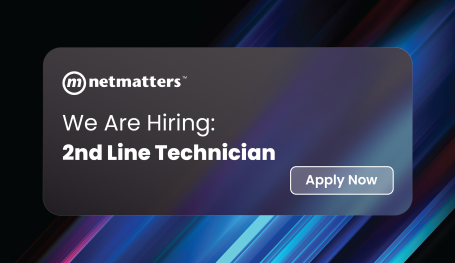-
Bespoke
Software
- Our Bespoke Software Services
- Bespoke CRM
- Business Automation
- Software Integrations
- Mobile App Development
- Bespoke Databases
- Sharepoint Development
- Operational Systems
- Business Central Implementation
- Internet of Things (IoT) Software
- Intranet Development
- Customer Portal Development
- Reporting Hub
- SAP S/4HANA Management
- IT Support
- Digital Marketing
-
Telecoms
Services
- Our Telecoms Services
- Business Mobile
- Hosted VoIP Provider
- Business VoIP Systems
- Business Broadband
- Leased Lines Provider
- 3CX Systems
-
Web
Design
- Our Web Design Services
- Bespoke Website Design
- eCommerce Website Design
- Pay Monthly Websites
- Branding & Design
- Mobile App Development
- Web Hosting
- Cyber Security
-
Developer
Course
- Our Developer Course Services
- Train For A Career In Tech
- Skills Bootcamp
- Scion Scheme Frequently Asked Questions
- Scion Collaborators
Harness the Power of Bespoke Software Like a Top 100 Manufacturer

Posted by Netmatters

Your business is a system of systems. As it grows and changes, the equipment and technology that powers it, changes too.
Business software should help you innovate along with realising or maintaining your competitive edge, however, with continuous changes within your organisation, the technology ‘stack’ you implement can become problematic. As a result, you may struggle to utilise all of your data effectively, specifically with integrating different systems together.
Off-the-Shelf Software (one-size doesn't fit all)
It could be that your software is industry or sector-specific. You may also already rely on software in core areas of business via a customer relationship management system or something similar. However, at some point, you may struggle to add or change things that you know will help grow your business, such as integrating new tools or switching to new systems.
Sector-specific software may seem like a good idea however, the reality is that focusing on your industry makes things easier for the software company but may not meet your exact needs.
Software Automation Provides New Growth Opportunities for Manufacturers
More businesses are starting to realise the importance of system automation and in an interesting statistic, it was UK manufacturers that lead the way with 93% of them having implemented a key automation software system in the last year.
Why as a Manufacturer, You Need a Software Solution.
System automation is required to increase the efficiency of a business through reducing errors and duplication of work.
Does someone in your team have to extract data from one place and input it again, somewhere else? Automating the ordering processes means there’s no need to manually enter them and helping different systems to talk to each other means minimal duplication.
Problems of a Top 100 Manufacturer
We were approached by a Top 100 UK Manufacture to address problems that had arisen due to a significant growth within their business.
Working with their IT Systems Manager we identified some problems that were holding the business back:

MRP: The customer was using Navision (Microsoft Dynamics Nav) to manage production and sales. This is a structured piece of software offered by Microsoft that doesn’t have the flexibility to adapt specifically to the needs of the business.
Website: The customer already had a Magento built website that couldn’t communicate with other areas of the business model causing road blocks during day to day processes.
Spreadsheets: Many smaller processes were being managed using different spreadsheets. Without a centralised system, it became a struggle to keep track of the different orders, meaning mistakes were made and duplicates were created.
Customers: Many of the customer’s biggest customers also asked for effective EDI (Electronic Data Interchange) which is what allows the exchange of business information electronically. Something that was necessary for customers placing large orders who needed a seamless process.
The direct cost to the business because of these problems came from the wages to the people required to deal with the rework, whilst other costs came from not being able to effectively manage the order process as the business grew where it had to meet the needs of new, larger customers.
The customer did express concerns about developing new software due to previous difficulties with fixed-spec, fixed-fee business models. An approach we believe has a very limited success rate. As a result, their existing set up was difficult to manage.
What did we do?
We identified current ways of working that were labour-intensive and likely to result in errors. Since the business was growing, new orders were increasing which meant more staff were needed to process the orders. It raised 3 main issues throughout the organisation:
1. Staff were required to manually input data which was a time consuming and heavily resourced activity that resulted in more errors when processing orders.
2. Customers and suppliers demanded an easier, automated ordering experience.
3. The business' website did not integrate with their MRP system.
We reviewed the business's specific needs and prioritised them into a development roadmap.
We deployed our Sysflow cloud-based platform as the backbone of all future development. The software was also expected to act as the bridge between all the disparate systems already in use. Sysflow is a set of basic building blocks, which uses open-source languages and frameworks and allows for rapid development. In this model, the customer owns the intellectual property.
With this as our base, we could then start to integrate each EDI from the individual customers. This allowed a quick return on investment by allowing the customer to redeploy staff elsewhere and satisfy the needs of larger customers. On a month-to-month basis, this redeployment resulted in more money being saved than what was being spent on the development itself.
Once all automated processing were in place, we then expanded the software to be able to read PDF’s from emails and directly input them into the system, saving a huge amount of resource from putting them in manually. This also greatly decreased the amount of errors taking place, reducing the credits and redeliveries that were needed.
The client also had multiple sites with multiple different languages that didn’t communicate with each other, causing data to be manually duplicated from ERP.
Integrating the website meant that all of the data could be pulled into a central location. Keeping the data in one place enabled all arms of the business to be able to access it. Larger trade customers could also then log in and place orders directly.
When this stage had been completed, we then began to work in other areas of the business and implement automation across the company.
Throughout the process, we would build functionality and deploy to a testing environment for the client to look through and provide feedback. We would immediately act on any changes or bugs that were reported until the client was happy to take this to a live environment.
This agile approach to the development of the software meant that we could rectify issues quickly with minimal disruption to the day to day running’s of the business so no resources or revenue were lost throughout the process.
The Results
Our solution provided a new way for the client to approach business software and systems development. As the project progressed, integration issues were being solved and efficiencies were introduced, allowing the business owners to see the progress we were making. It meant that we could also reveal new possibilities for further development that were previously dismissed due to bad experiences.
For us, there were three key points that ensured this was a successful project and delivered on the overall objectives.
Owned by the Customer
A key feature about our software is that it does not make the customer beholden to us. We create software that is owned by the customer and at any point can be taken elsewhere. The customer has the full rights to the software to do as they see fit with its development.
Robust and Scalable
The system needed to be able to manage the volume of orders coming through, whilst also delivering an easy experience for the customers. It also needed to work with the client as the business grew and new needs were identified. This could be new functionality or other programmes to integrate.
Reduction in Errors
One of the main issues the customer faced previously was the amount of errors due to manual input. It was important to us that we delivered a piece of software that would dramatically reduce the number of errors that occurred, preventing the need for reorders.
By joining up all of the operations, real time data was available for analysis which allowed us to make real-time decisions to improve the process at every stage of the buyer journey, creating a streamlined user experience that resonated with the behind the scenes.
For the customer, it allowed them to open other doors to increase their investment, add new features and make the business more profitable.
In terms of cost savings, efficiency and scalability, the results have been amazing. The system has provided a flexible framework to allow the customer to develop functionality to achieve what they need. Whilst we can bring the ability and wealth of ideas, we aim to empower the customer to effect change in their business as they see fit without the tie of a structured piece of software that doesn’t work with them.
How our bespoke software could assist your business:
This is just one project that has been a huge success for our expert software development team and we are always looking for the next.
Our process is simple. We work with the customer to understand exactly what they need and how we can help them achieve it effectively.
If you believe your business is in the market for a piece of software that drives business growth, we encourage you to get in touch with us using the contact form below.



